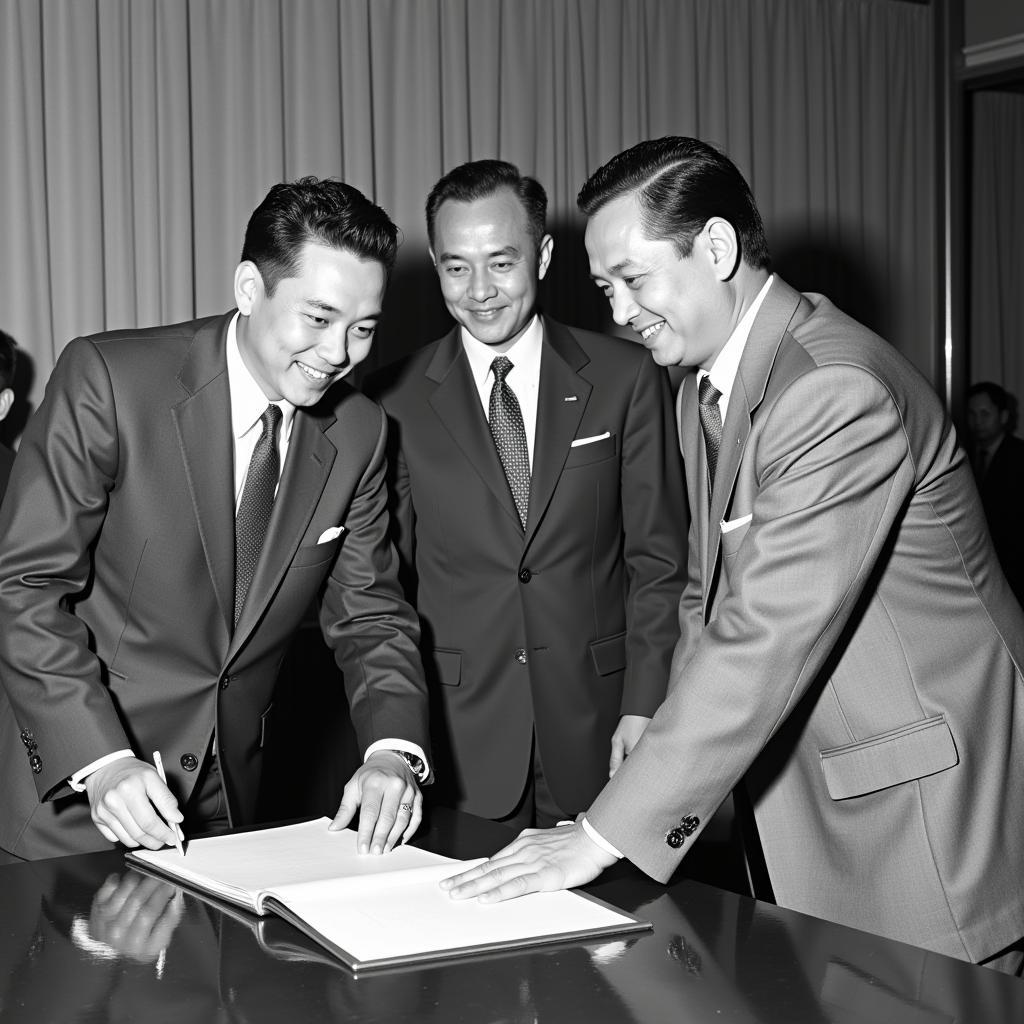The terms “ASA” and “ASEAN” are often used in discussions about Southeast Asia, leading to some confusion about their distinct meanings and significance. While both acronyms represent regional cooperation initiatives, they differ significantly in their historical context, member states, and overall objectives. This article aims to clarify the differences between Asa And Asean, highlighting their individual roles in shaping the geopolitical landscape of Southeast Asia.
ASA: The Precursor to Regional Collaboration
The Association of Southeast Asia (ASA), established in 1961, marked the first significant attempt at formal regional cooperation in Southeast Asia. Founded by Thailand, Malaysia, and the Philippines, ASA aimed to foster closer economic and cultural ties among its member states. Key areas of collaboration included scientific and technological advancement, trade promotion, and cultural exchange programs.
 ASA Founding Members
ASA Founding Members
However, ASA’s progress was hampered by several factors, including prevailing political tensions between member states and the lack of inclusivity towards other Southeast Asian nations. These limitations ultimately led to the association’s dissolution in 1967, paving the way for a more comprehensive and inclusive regional organization.
ASEAN: Forging a Unified Southeast Asia
The formation of the Association of Southeast Asian Nations (ASEAN) in 1967 signaled a turning point in regional cooperation. Building upon the foundations laid by ASA, ASEAN adopted a more inclusive approach, welcoming Indonesia, Singapore, along with the original ASA members.
ASEAN’s primary objective is to promote peace, stability, and economic prosperity in Southeast Asia. The organization facilitates dialogue and cooperation on a wide range of issues, including political and security matters, economic integration, and socio-cultural development.
Over the years, ASEAN has expanded its membership to include Brunei Darussalam, Vietnam, Laos, Myanmar, and Cambodia. This expansion reflects ASEAN’s commitment to fostering regional integration and cooperation across Southeast Asia.
Key Differences and Enduring Legacy
The distinctions between ASA and ASEAN lie in their scope, membership, and historical context. While ASA represented an early attempt at regional collaboration, its limited membership and focus primarily on economic and cultural cooperation restricted its impact. In contrast, ASEAN’s inclusive approach, encompassing a broader range of issues and a larger membership base, has established it as the cornerstone of Southeast Asian integration.
ASEAN’s success can be attributed to its ability to adapt to evolving regional dynamics and address emerging challenges collectively. The organization has played a crucial role in fostering economic growth, promoting political stability, and enhancing social development within Southeast Asia.
Conclusion
Understanding the differences between ASA and ASEAN is essential for comprehending the historical trajectory and current state of regional cooperation in Southeast Asia. While ASA laid the groundwork for regional collaboration, ASEAN has emerged as the primary platform for Southeast Asian nations to engage in dialogue, address shared challenges, and pursue common goals. As ASEAN continues to evolve and adapt to the changing global landscape, it remains a vital force for promoting peace, stability, and prosperity in the region.
FAQs
1. When was ASA established?
The Association of Southeast Asia (ASA) was established in 1961.
2. How many member states were there in ASA?
ASA consisted of three founding members: Thailand, Malaysia, and the Philippines.
3. What is the main difference between ASA and ASEAN?
The main difference lies in their scope and membership. ASA had a limited focus on economic and cultural cooperation and only included three member states. ASEAN, on the other hand, adopts a broader approach, covering a wide range of issues and including all ten Southeast Asian countries.
4. What is ASEAN’s primary objective?
ASEAN’s primary objective is to promote peace, stability, and economic prosperity in Southeast Asia through dialogue and cooperation.
5. How has ASEAN contributed to Southeast Asia?
ASEAN has played a pivotal role in fostering economic growth, promoting political stability, and enhancing social development within Southeast Asia.
Need Help? Contact Us!
For any inquiries or assistance, please don’t hesitate to contact us:
- Phone Number: 0369020373
- Email: aseanmediadirectory@gmail.com
- Address: Thon Ngoc Lien, Hiep Hoa, Bac Giang, Vietnam
Our dedicated customer support team is available 24/7 to assist you.
